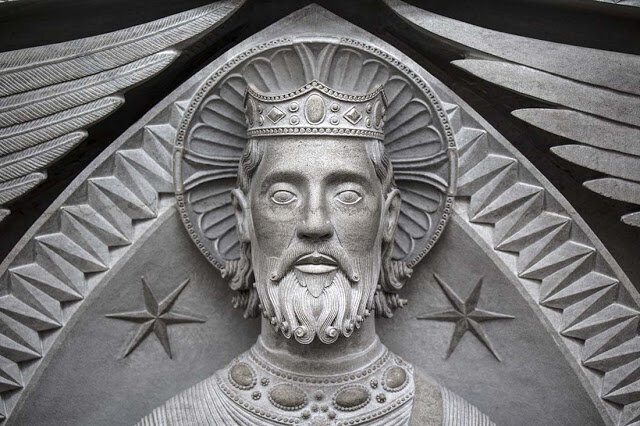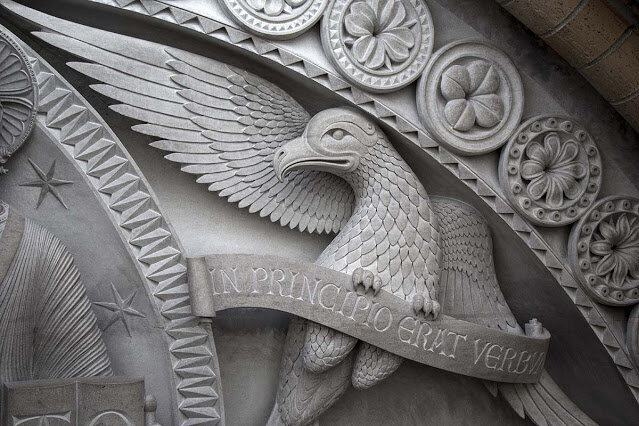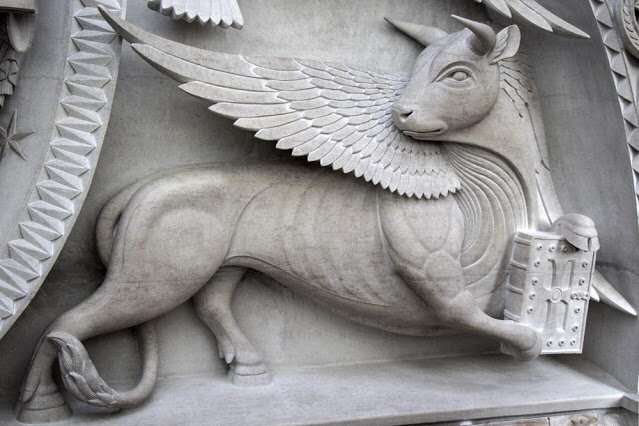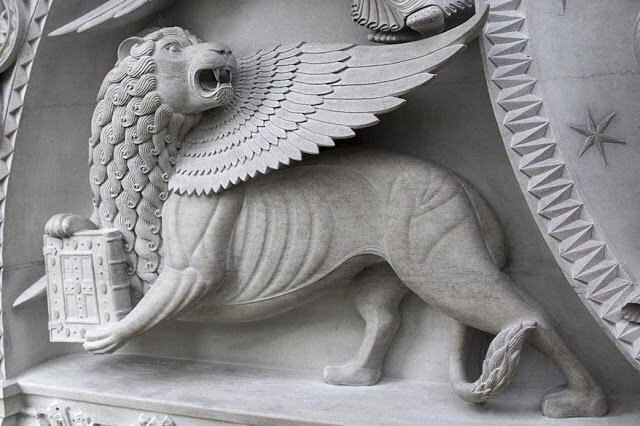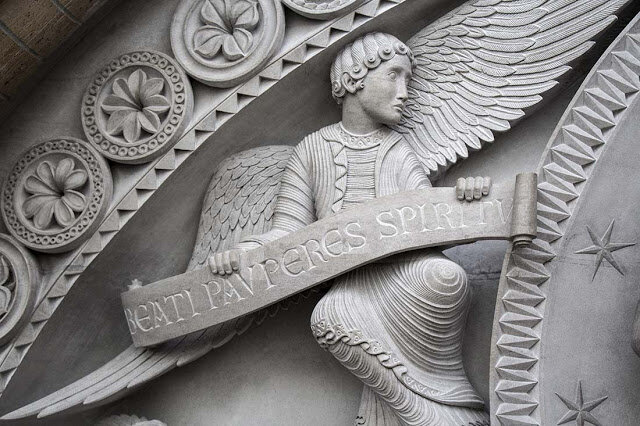New Romanesque-Style Sculptures at an Oklahoma Monastery with Links to Ancient French Abbeys
Even since its founding in 2000, the Benedictine Abbey of Our Lady of Clear Creek in Oklahoma has been planning and constructing distinguished monastic buildings. Their architecture makes use of time-honored elements that speak the well-understood sacred language of the traditional forms of Catholic architecture. The buildings at the abbey are being constructed of brick and stone to endure for millennia.
The abbey recently unveiled a new tympanum* above the main portal of the church, which is decorated with Romanesque-style stone carvings of Christ in majesty, surrounded by the symbols of the Four Evangelists.
Remarkably, the carving was done by George Carpenter a self-trained stone carver who lives with his family near the monastery. Carpenter is also a trained blacksmith and has completed several other projects for the monks, including iron-work, light fixtures and carved stone altars.
The two historiated** Annunciation capitals** on the columns under the lintel, were done in 2013 by Andrew Wilson Smith, who is also self-taught in the art of stone carving. The capitals depict events in salvation history spanning from the creation of Adam and Eve to the Annunciation and the birth of Christ.
The lintel, the horizontal support below the tympanum, is decorated with sculptures of the Twelve Apostles.
* A tympanum (plural, tympana; from Latin and Greek words meaning "drum") is the semi-circular or triangular decorated area over an entrance.)
** Historiated capitals are decorated with figures, usually to tell a story.
*** Capital (from the Latin caput, or "head") is the decorated top of a column.
The relatively young Abbey of Our Lady of Clear Creek has ancient European connections. Clear Creek is one of numerous Benedictine abbeys founded from the line of the Abbey of St. Peter at Solesmes. Ever since the time of Abbot Dom Prosper Gueranger, the famous liturgist, Solesmes has been dedicated to the study and preservation of traditional Gregorian chant, which has been sung for centuries as part of the liturgy of the Catholic Church. After the Second Vatican Council, Pope Saint Paul VI asked Solesmes to continue to preserve Gregorian chant “not as a treasure relegated to a museum, but as a living prayer that helps souls ascend to God.”
Clear Creek monastery was founded by Americans, who in the 1970s initially became interested in the monastic life while studying at a Great Books program at the Integrated Humanities Program at the University of Kansas. They joined Notre-Dame de Fontgombault Abbey in France—which itself was one of the many abbeys founded by Solesmes. The Americans discovered Fontgombault was flourishing with many vocations, despite the crisis of vocations going on almost everywhere else—so many vocations that Fontgombault also had to found new monasteries.
After a decades-long search for a suitable site in the U.S., the new abbey was founded on a former ranch site on Clear Creek in the diocese of Tulsa. And the rest is history, which you can read more about here.
So far at Clear Creek, they have completed two large buildings, a residence hall and a gate house. The abbey church is partly complete. They are working on the sanctuary (the chevet on the east side of the church) now. The church walls are currently only half of the planned height, and in the meantime the monks worship under a temporary roof. Donations towards the construction would be welcome here.
This post was originally published here at the Catholic Arts Today Facebook page, and is republished here, in slightly edited form, with permission.


